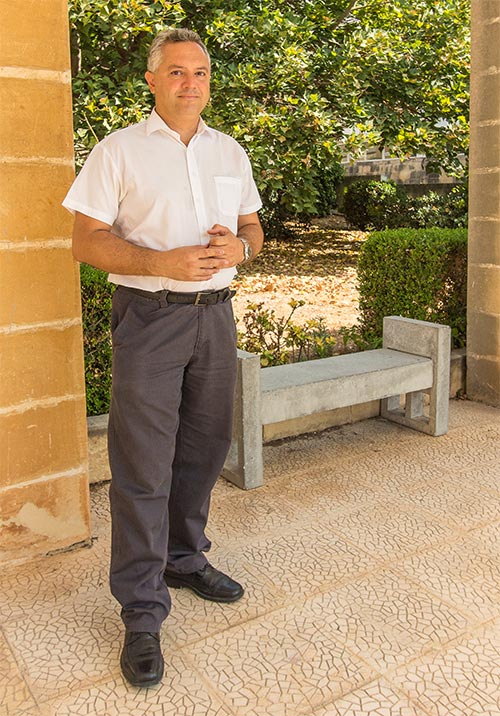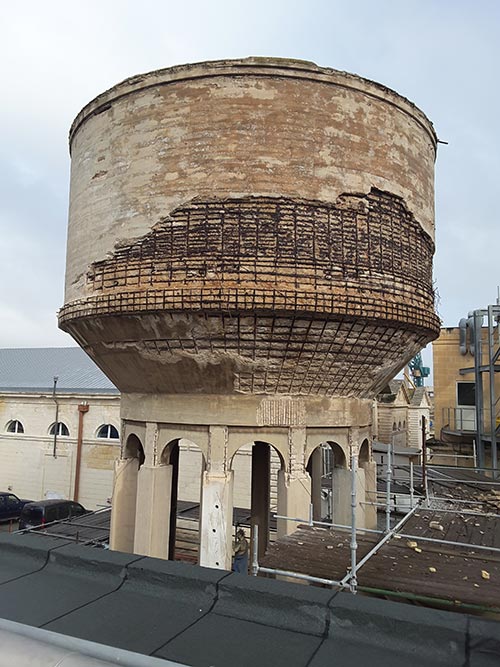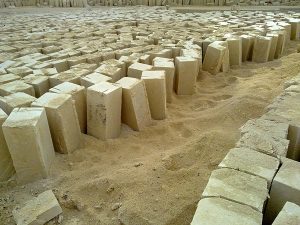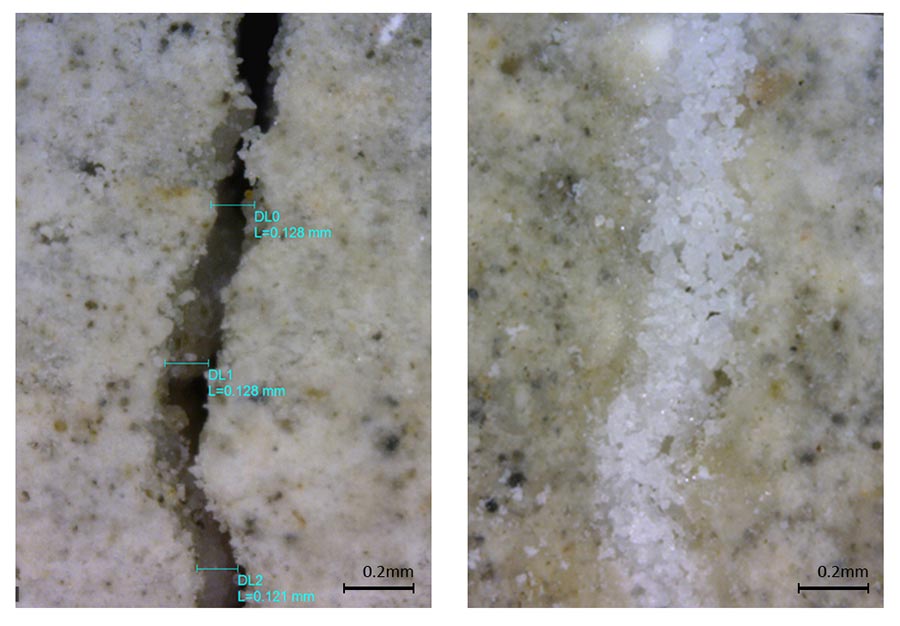Concrete is the most used building material supporting the construction boom. Hans-Joachim Sonntag talks to Dr Ruben Paul Borg about advances in cement bound materials that can lead towards sustainable development, more durable buildings, and a lower carbon footprint.
Listen to this article as a podcast
In the compacted floors of the Maltese Islands’ Neolithic temples lies a precursor of concrete. Its modern reinvention surrounds us today in buildings, civil engineering works, and infrastructure. The rapid growth of Malta’s construction industry and infrastructure (currently pushing above 5% GDP rate of growth) has led to a reliance on concrete’s versatility and adaptability. Construction materials expert Dr Ruben Paul Borg says that while concrete usually evokes negative connotations—think ‘concrete jungle’—it is absolutely essential to modern life and holds many interesting secrets.
At its core, concrete is a mixture of gravel, sand, and cement acting as a binder which reacts with water, ultimately producing a hardened material. This basic recipe leaves the door open for a diverse range of cement bound materials which can be engineered to suit a wide variety of applications from artworks to towering skyscrapers. But how does it really impact us?


Asked why he first became interested in working with concrete, Borg lists three main reasons: innovation, cultural heritage, and sustainability. ‘It is hard to overstate the importance of sustainability,’ he says. ‘Cement production alone accounts for over 5% of the manmade contribution to CO2 emissions, simply because we use so much of it,’ and that statistic will only increase with the current growth rate. Sustainable construction can only be achieved through innovative approaches intended to reduce concrete’s carbon footprint. This can be achieved in different ways: through the use of alternative low impact materials and industrial by- products, development of advanced materials, and more durable concrete structures. For all this, Borg says, ‘we can take inspiration from history.’
Researchers in the field turn to the ancient Romans because they were the first to use concrete on a large scale. Roman concrete, opus caementicium, is made with basic ingredients, including volcanic ash acting as a binder, resulting in an improved microstructure and enhanced durability. Opus caementicium was used in the Pantheon in Rome, the world’s largest unreinforced concrete dome, which still stands today, 2,000 years on. ‘This use of local material, including waste materials, to improve the material’s design and durability is the perfect example of how we should think about sustainable concrete,’ says Borg.
Reinforced concrete was developed in Europe over 100 years ago. Made out of concrete with embedded steel bars, it can withstand huge compressive and tensile stresses. As a result, its use increased dramatically, ultimately becoming the most widely used construction material. However, there are downsides. Embedded reinforcing bars can corrode and lead to cracking, degrading structures. Borg refers to the historic 1930s reinforced concrete water tower at the Civil Abattoir, a unique structure in Malta which he and his team are currently restoring, reverting to advanced cement-based materials, composites, and techniques. ‘We need to pay more attention to the preservation of industrial heritage and concrete British military structures in Malta,’ Borg says. ‘These structures present a challenge in appreciating first and then restoring our 19th and 20th century heritage. But they also present an opportunity in understanding how early concrete and reinforced concrete structures performed over time and the mechanisms involved in their degradation.’ ‘This,’ he adds, ‘enables us to design durable infrastructure for a sustainable future.’

Non-corroding materials could be one solution to the problems facing reinforced concrete. During his past research, Borg focused on the potential of high-performance fibre- reinforced concrete structures and the exploitation of materials such as waste limestone. In another recent study, fibres produced from recycled waste plastic polyethylene terephthalate bottles helped in controlling early stage cracking of concrete.
Such approaches fit into the concept of the ‘circular economy’ which is strongly promoted by the European Union by addressing the life cycle impact of materials and structures. In line with this principle, Borg has been successfully using quarry limestone and excavation waste as alternatives to cement and aggregate to produce strong and durable cement bound materials. In addition, construction and demolition waste, which accounts for the largest portion of waste generated in Malta, has been used to produce concrete with improved lifecycle performance, effectively resulting in reductions in raw material being extracted and in waste produced.
Cement’s high contribution to carbon emissions is another major problem. The production of cement is highly energy intensive, therefore different binders based on industrial by-products and waste materials can help reduce the environmental impact. Together with his students, Borg has been developing a geopolymer concrete that should help reduce concrete’s carbon footprint.
‘Notwithstanding these advances,’ says Borg, ‘the best way to tackle the carbon footprint of concrete is to use materials efficiently for an intended application and ensure structures perform throughout their lifetime.’ This brings us neatly back to the issue of durability in concrete structures. Using a technique called Structural Health Monitoring, sensors inside the concrete can detect materials and structural performance and lead to improved safety through early detection of damages, as well as a better understanding of what makes certain structures more durable. Cracks occurring in concrete structures may lead to degradation and loss in integrity with time. In recent studies Borg is conducting with his students and collaborators, he is also looking at ‘self-healing’ concrete using specific concrete additives, as well as particular strains of bacteria to heal cracks in concrete. Showing microscopy images from these studies, Borg explains that the technology holds great potential for the future.
Industry interest and new European-funded projects mean Borg is confident that the findings will be applied.


‘Academia should be a driving force in the process by staying one step ahead and by inspiring industry,’ he states. Besides the interest from the private sector in these advances, he also nods to the government which has also acknowledged the importance of concrete sustainability. To develop new standards for construction waste recycling when demolishing or dismantling buildings, University of Malta researchers are collaborating with the MCCAA (Malta Competition and Consumer Affairs Authority) and the BICC (Building Industry Consultative Council, Government of Malta). The work promises to solve a key waste problem as more than 80% of waste by weight generated is from construction, and it should lead to a better quality of the built environment for everyone.
There are endless opportunities for innovation in concrete and as many issues. Concrete may not be appreciated, especially given the problems Malta is facing with development and the countless cranes that come with it. The importance of sustainability is key given concrete’s impact and use within society, which offers significant challenges. It is only with research like Borg’s that we can hope to transform these challenges into opportunities.




Comments are closed for this article!